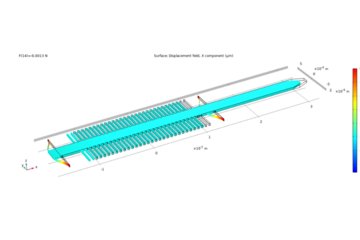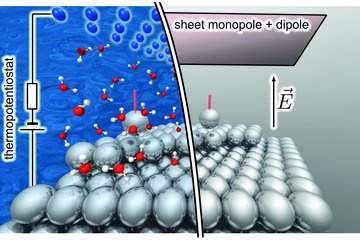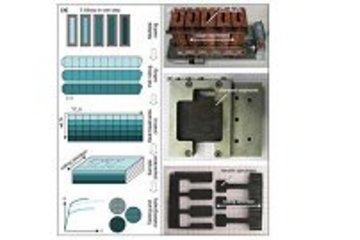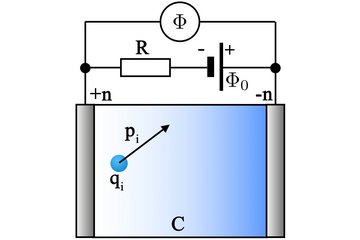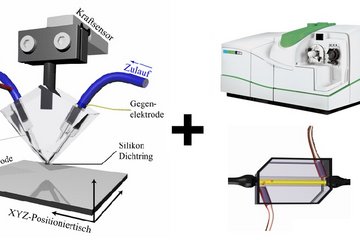All genres
41.
Talk
Wachstumsspannungen und Eigenspannungen in Oxidschichten auf Armcoeisensubstraten. FA 13 Eigenspannungen der AWT, Forschungsgemeinschaft Werkzeuge und Werkstoffe e.V., Remscheid (2007)
42.
Talk
Anisotropic Size Change During Continuous Quenching and Deep Freezing of Tool Steel. 5th Intern. Conf. on Quenching and Control of Distortion and European Conf. on Heat Treatment, Berlin, Germany (2007)
43.
Talk
Joining of Hardmetal to Steel by Laser Beam Welding. Verbundwerkstoffe und Werkstoffverbunde, Bremen (2007)
44.
Talk
Stress & texture studies. 5th European Winter School (NESY 2007) Research with Neutron and Synchrotron Radiation, Planneralm Styria / Austria (2007)
45.
Talk
Microstructure Formation in CMT-, MIG- and Laser-Hybrid Welds. 12. International Metallographie-Tagung, Leoben, Österreich (2006)
46.
Talk
Internal stresses in Li2O–SiO2 glass-ceramics. 7th European Conference on Residual Stresses (ECRS 7), Berlin, Germany (2006)
47.
Talk
Surface and Bulk Internal Stresses in Li2O-2SiO2 Glass Ceramics. 5th Annual Denver X-ray Conference, Denver, USA (2006)
48.
Talk
Microstructure and Residual Stresses in partially crystallized Li2O-2SiO2 Glass-Ceramics. 4th Meeting ADEMAT Network, Alicante, Spain (2006)
49.
Talk
Internal Stresses in Oxid Layers on Iron Polycrystals. User Meeting HASYLAB bei DESY, Hamburg, Germany (2006)
50.
Poster
Phase composition and internal stress development during the oxidation of iron aluminides. ICRS-8, Denver, CO, USA (2008)
51.
Poster
Microstructure and residual stresses of high-strength steel to aluminium alloy friction stir welds. ICRS-8, Denver, USA (2008)
52.
Poster
In-situ investigation of grain rotations during tensile straining of steel wires. ICRS-8, Denver, CO, USA (2008)
53.
Poster
Application of EBSD to the characterization of induction-assisted welds in high strength. Electron Backscatter Diffraction Meeting, Sheffield, UK (2008)
54.
Poster
Residual Stresses and Phase Composition in Oxide Layers grown on Iron Aluminides. MECASENS IV, Wien, Austria (2007)
55.
Poster
An Automatic Procedure for Residual Stress Analysis in Individual Crystallites of a Polychrystalline Material. Euromat 2007, Nürnberg, Germany (2007)
56.
Poster
Microstructure and Residual Stress Formation in Oxide Layers Grown on the Gamma-Ti–45Al–5Nb Alloy. Euromat 2007, Nürnberg (2007)
57.
Poster
The Effect of Crystal Orientation on the Oxidation Behavior of Iran Substrates. SNI 2006, German Conference for Research with Synchrotron Radiation, Neutrons and Ion Beams at Large Facilities, Hamburg, Germany (2006)
58.
Poster
Residual Stresses in the Exoskeleton of a Homarus americanus Lobster. SNI 2006, German Conference for Research with Synchrotron Radiation, Neutrons and Ion Beams at Large Facilities, Hamburg, Germany (2006)
59.
Poster
Residual Stresses in the Exoskeleton of a Homarus americanus Lobster. SNI 2006, German Conference for Research with Synchrotron Radiation, Neutrons and Ion Beams at Large Facilities, Hamburg, Germany (2006)
60.
Poster
Microstructure and Residual Stress Formation in Oxide Layers Grown in High Niobium Containing g-TiAl Based Alloy. SNI 2006, German Conference for Research with Synchrotron Radiation, Neutrons and Ion Beams at Large Facilities, Hamburg, Germany (2006)






